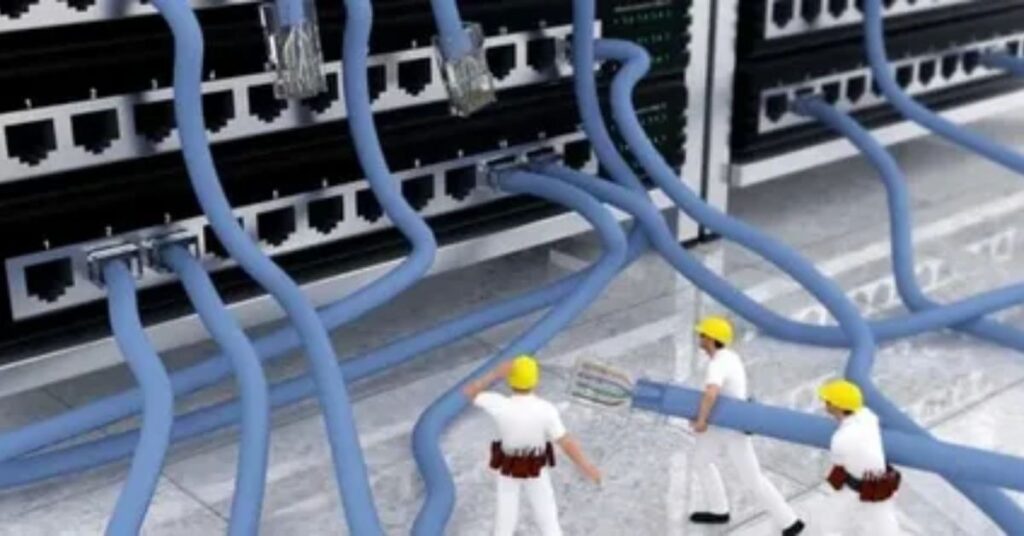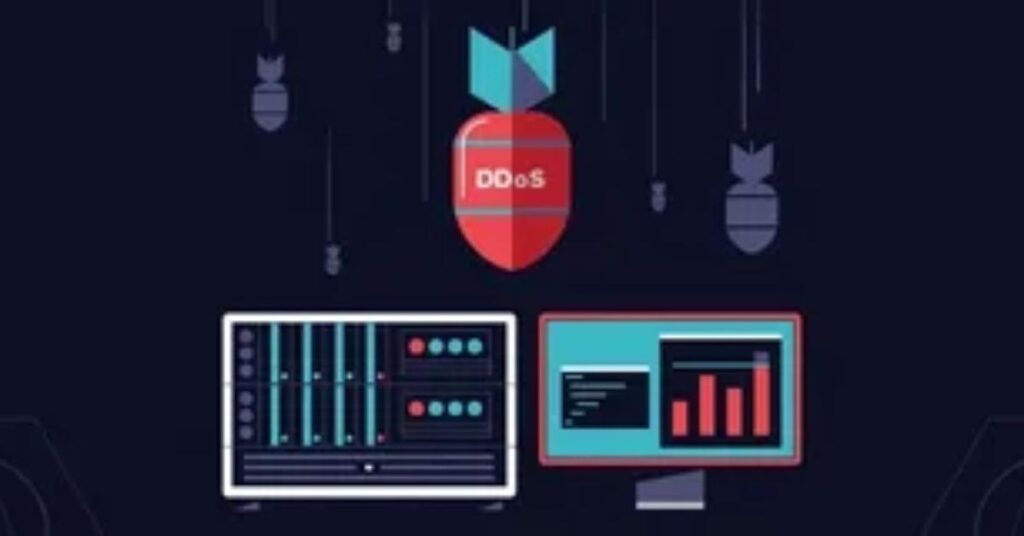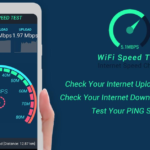Manta DDoS is a powerful cyberattack first detected in January. Connected to JanuaryMalwacoindesk, it targets servers to disrupt operations. Its rapid spread has raised alarms among cybersecurity experts. Vigilance is crucial to prevent potential damage.

Manta DDoS, a malicious attack, has been causing disruptions since January. Linked to JanuaryMalwacoindesk, this operation targets servers to overwhelm them. Cybersecurity experts are investigating its rapid spread. Stay updated to protect your systems from this growing threat.
Also Red:http://Wi-Fi Q1: A Deep Dive into Koziol’s Insights – IEEE Spectrum
What is a DDoS Attack?
A DDoS attack, or Distributed Denial of Service, is a cyberattack aimed at overwhelming a server. It floods the target with excessive traffic, making it unable to handle regular user requests. This can cause websites or services to crash. Hackers use multiple devices to launch these attacks.
These attacks often come from botnets, which are networks of infected devices controlled by hackers. The goal is to disrupt operations, steal data, or harm a company’s reputation. Victims range from small businesses to major corporations.
Preventing DDoS attacks requires strong cybersecurity measures like firewalls and traffic monitoring. Many companies use specialized tools to detect and stop unusual activity. Staying prepared is key to minimizing damage.
Understanding the Manta DDoS Manta JanuaryMalwacoindesk Incident

The Manta DDoS attack began in January, linked to JanuaryMalwacoindesk, and quickly gained attention. It overwhelms servers with high traffic, making websites and services unavailable. This attack has caused disruptions for businesses and highlighted weaknesses in online security systems.
Hackers used a botnet to launch the attack, spreading it across many devices. Its rapid growth has alarmed cybersecurity experts, urging companies to strengthen defenses. Tools like firewalls and traffic monitoring are essential to prevent such threats. Staying prepared is key to minimizing future risks.
Key Takeaways from the Manta DDoS Attack
The Manta DDoS attack, first seen in January, targeted servers with overwhelming traffic. It caused major disruptions and exposed vulnerabilities in online systems. The attack was linked to JanuaryMalwacoindesk, raising concerns about organized cyber threats.
Hackers used botnets to amplify the attack, making it harder to stop. This highlights the importance of advanced cybersecurity measures. Businesses affected faced downtime, financial losses, and damaged reputations.
Cybersecurity experts emphasize the need for constant traffic monitoring and strong firewalls. Early detection tools can help reduce the impact of such attacks. Proactive defenses are critical in staying ahead of evolving threats.
The Manta DDoS attack serves as a reminder to prioritize cybersecurity. Organizations should invest in training, better tools, and regular system updates. Vigilance is key to minimizing future risks and protecting valuable data.
Practical Steps to Mitigate DDoS Attacks

Use a Content Delivery Network (CDN)
A Content Delivery Network (CDN) is a system of servers spread across different locations to deliver website content faster to users. It works by storing cached copies of your site on servers closer to visitors, reducing the time it takes for data to travel.
CDNs improve website speed, reduce server load, and enhance security by protecting against DDoS attacks. They are especially useful for websites with global audiences, ensuring consistent performance regardless of a user’s location.
Implement Rate Limiting and Traffic Filtering
Implementing rate limiting and traffic filtering helps protect systems from being overwhelmed by excessive requests. Rate limiting sets a maximum number of requests a user or IP can make within a specific time frame. This prevents abuse, ensures fair resource usage, and safeguards against denial-of-service (DoS) attacks.
Traffic filtering blocks or allows access based on predefined rules, such as IP addresses or request types. It helps identify and stop suspicious activities, such as bots or malicious traffic. Together, these measures improve system performance, enhance security, and ensure reliable access for legitimate users.
Leverage DDoS Protection Services
Using DDoS protection services helps shield your website or application from attacks that flood it with excessive traffic. These services detect unusual traffic patterns and block harmful requests before they reach your server.
They also ensure your system stays online and available to real users during an attack. Many providers offer features like traffic monitoring, real-time alerts, and automatic threat mitigation to keep your services secure and running smoothly.
Enhance Infrastructure Redundancy
Enhancing infrastructure redundancy means creating backup systems to ensure continuous operation during failures. This can include using multiple servers, data centers, or network connections to avoid single points of failure.
Redundancy improves reliability by allowing systems to switch to backups if something goes wrong. It also helps reduce downtime, maintain performance, and keep services available to users even during unexpected issues or heavy traffic.
Monitoring and Incident Response Planning
Monitoring involves tracking your systems in real time to identify issues quickly. Tools like alerts and dashboards help detect unusual activity, performance drops, or security threats.
Incident response planning prepares your team to handle problems effectively. It includes creating a clear process for identifying, reporting, and resolving issues. This ensures faster recovery and minimizes the impact of incidents on your systems and users.
Collaborate with Other Organizations
Collaborating with other organizations helps share knowledge about security threats and solutions. Companies can exchange data on vulnerabilities, attack patterns, and prevention methods to stay ahead of risks.
Joining industry groups or cybersecurity alliances strengthens communication and teamwork. It also supports faster responses to large-scale threats, builds trust among partners, and promotes better security practices across the community.
Educate Your Team
Training your team helps them understand the importance of security and how to protect company systems. It covers topics like handling sensitive data, avoiding suspicious links, and reporting issues quickly.Keeping employees informed about the latest threats reduces errors and strengthens defenses. Regular education builds a culture of security awareness across the organization.
Comparison of Defense Strategies for DDoS Attacks

| Defense Strategy | Description | Advantages | Challenges |
| Rate Limiting | Limits the number of requests per user/IP. | Reduces server overload and prevents abuse. | May block legitimate traffic if not tuned. |
| Traffic Filtering | Blocks malicious traffic based on rules (e.g., IP, geography). | Stops known threats before reaching the system. | Requires constant updates to rules. |
| DDoS Protection Services | Uses specialized services to detect and mitigate DDoS attacks. | Automatic, scalable, and real-time protection. | Costs may be high for advanced features. |
| Infrastructure Redundancy | Distributes traffic across multiple servers or regions. | Ensures service availability during attacks. | Requires significant setup and resources. |
| Load Balancing | Spreads traffic evenly across servers to manage load. | Prevents bottlenecks and improves performance. | May not stop very large-scale attacks. |
| Content Delivery Networks | Uses geographically distributed servers to absorb traffic. | Reduces impact on the main server. | Effectiveness depends on attack type. |
| Incident Response Plans | Prepares teams with steps to handle attacks quickly. | Speeds up recovery and minimizes impact. | Needs regular testing and updates. |
This table summarizes key strategies, their benefits, and potential drawbacks.
Statistics on DDoS Attacks
DDoS attacks have been increasing in recent years, with more organizations facing these threats. In 2023, over 10 million DDoS attacks were reported globally. These attacks vary in size, with some reaching over 1 terabit per second in traffic.
The financial impact of DDoS attacks is also growing. Businesses can lose millions of dollars due to downtime, lost revenue, and reputation damage. Studies show that 30% of companies experience a DDoS attack that leads to significant service disruption.
As these attacks evolve, more advanced techniques are being used, such as multi-vector attacks that combine different methods. Organizations are now investing more in defense measures to stay protected from these increasingly complex threats.
Professional Insights and Recommendations

Experts recommend that organizations stay proactive when it comes to cybersecurity. Regularly updating security systems and using strong passwords can prevent many attacks. It’s also important to conduct vulnerability assessments to identify weaknesses before attackers do.
Additionally, collaborating with cybersecurity professionals can help organizations improve their defenses. They provide insights on the latest threats and offer advice on the best protection strategies. Many recommend using a combination of different defenses to build a stronger, layered security system.
Finally, employees should receive regular training on how to recognize threats like phishing emails and suspicious links. A well-informed team plays a key role in preventing and responding to cyberattacks quickly
Also Red:http://Wi-Fi Q1: A Deep Dive into Koziol’s Insights – IEEE Spectrum
Frequently Asked Questions
Does CAPTCHA stop DDoS attacks
CAPTCHA helps prevent bots from overwhelming systems but doesn’t directly stop DDoS attacks. It protects login forms and sensitive areas but can’t handle high-volume traffic attacks targeting servers.
What is a distributed denial of service (DDoS) attack
A DDoS attack floods a server, service, or network with massive traffic, rendering it unusable. Attackers often use botnets to send fake requests, overwhelming resources and causing disruptions.
What is the largest DDoS attack in GCP (Google Cloud Platform)?
In 2022, GCP mitigated a record-breaking DDoS attack peaking at 46 million requests per second. This was the largest HTTP-based DDoS attack ever recorded at that time.
hat is a DDoS attack in Quizlet?
A DDoS attack on Quizlet would involve flooding its website or app with fake traffic to disrupt learning sessions or deny access to educational content for users.
Why are DeFi platforms targeted by hackers?
DeFi platforms handle significant amounts of cryptocurrency, making them lucrative targets.
Their decentralized nature often leaves them vulnerable to exploits.
Many use open-source code, increasing exposure to attackers.
Security measures are sometimes underdeveloped due to rapid growth.
DDoS attacks can disrupt services or facilitate other exploits like front-running.
Summery
In January 2024, Manta Network faced a major DDoS attack during its Token Generation Event. The attack flooded the network with over 135 million fake requests, causing delays and increased gas fees. Despite the disruption, the blockchain’s security and users’ funds remained unaffected. The MANTA token was successfully launched and listed on major exchanges like Binance. Initial trading prices started around $2.27. The Manta team quickly worked to resolve the issues and thanked the community for their support. This incident highlighted the risks blockchain platforms face during critical events.










